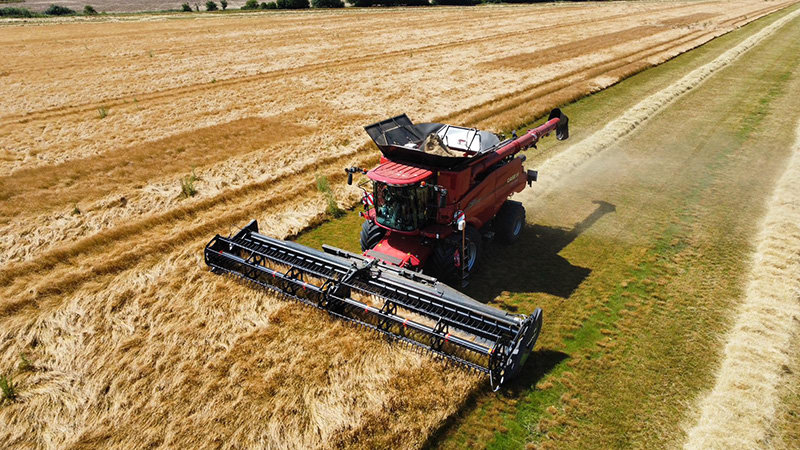A late harvest, of course, can have undesirable knock-on effects for the following season, whether it’s delaying cultivations or, more seriously, drilling. For many UK growers – those plagued with grass-weeds – such delays can even affect the success of the stale seedbed techniques and other cultural control methods on which they rely as a valuable counterpart to chemical options.
Yet there’s another route to grass-weed control that’s largely underappreciated. You see, black-grass likes to stand out in a crowd: it does its best to be highly competitive against cereals. That’s why the advice is to tackle it early, before it hollows out yield potential and reaches a size where chemical control presents a heightened risk of selecting for resistance.
But put it amongst other grass species and it’s a different story. It doesn’t compete against the increased seed rate of a grass or herbal ley. What’s more, with no crop to damage, the sward can be cut before the black-grass heads.
Time to ease up on a tight crop rotation? Why not take a couple of fields out, give them a break? Put them into a multi-year ley, and not only can you be assured of a significant reduction in the black-grass soil seed bank, but you’ll have more time to devote to a more manageable and less headache-inducing cropping regime over the rest of the farm.
So, in the week that Defra announced more details of the Sustainable Farming Initiative (SFI), it’s worth considering that one of its options – SAM3 – is a herbal ley that will pay up to £382/ha/year.
That’s because the very action of any ley, but especially one incorporating mixed species, will measurably improve and maintain the soil’s structure, carbon and biology. Put any field under a covering of grass and you’ve sown yourself the ultimate no-till production system. No more harsh sunlight and heavy rain for the soil beneath the grass. Instead, a diverse and intricate soil community comprising bacteria, fungi, roots and their exudates, and the all-important growing plants.
Grass as a crop
Yes, one of the best ways to improve the productivity of your arable fields is to put it into grass. Soil needs a rest from the intensity of arable production; giving it a rest with grass will naturally boost nutrient cycling and soil structure, while helping to reduce the weed and pest burdens whose treatments can themselves contribute to soil damage. It’s why it forms a key principle of regenerative agricultural practices.
Now, as an arable farmer – take heart. You’re used to growing crops; don’t get cold feet at the idea of growing grass. Treat it like a crop and it will reward you like a crop. The only difference is that, unlike most arable crops, you don’t sow a single variety or a single species. The best fields of grass are those with the seed mixture that best suits the soil and your purpose – and there’s no one better-placed to advise you than your local seed merchant.
Consider the following: why do you want to grow grass? Are you going to go all-out for black-grass control, or focus on soil quality?
Next up is duration. How long do you want to take a field out of the arable rotation?
And finally, what are you going to do with it? Have you a neighbour with whom you can set up a grazing or cutting arrangement? Is there an energy generator who would buy the crop for biomass?
A lot will also depend on how much input you want to give the crop. You might want an arrangement where it takes up minimal management and labour, giving you more time to focus on the fields and crops still in your arable rotation.
Your merchant’s likely to suggest Italian ryegrass if all you’re after is a short-term option for cutting and grazing; it’s also a great choice where black-grass control is a consideration, as the IRG enjoys quick emergence and rapid, vigorous growth.
Meanwhile, at the other end of the scale – up to five years in grass – biomass is probably the main goal. This will provide neighbours with summer contract grazing, quality amounts of silage, or material suitable for use as an AD feedstock.
Make marginal land productive
If you’re still not convinced, one further consideration may sway you. That awkward field that’s always late to come good, or that block of land that’s away from the main holding and a pain to manage through harvest?
Grass has an amazing ability to transform marginal land into productive land. You may well find that forage – especially if supported by SFI payments – could offer a better return than conventional cropping on such land.
Do the figures and you may be surprised how bringing grass into your arable rotation can really make sense – financially and sustainably.
Janet Montgomery is Barenbrug’s UK Agriculture Product Manager.




